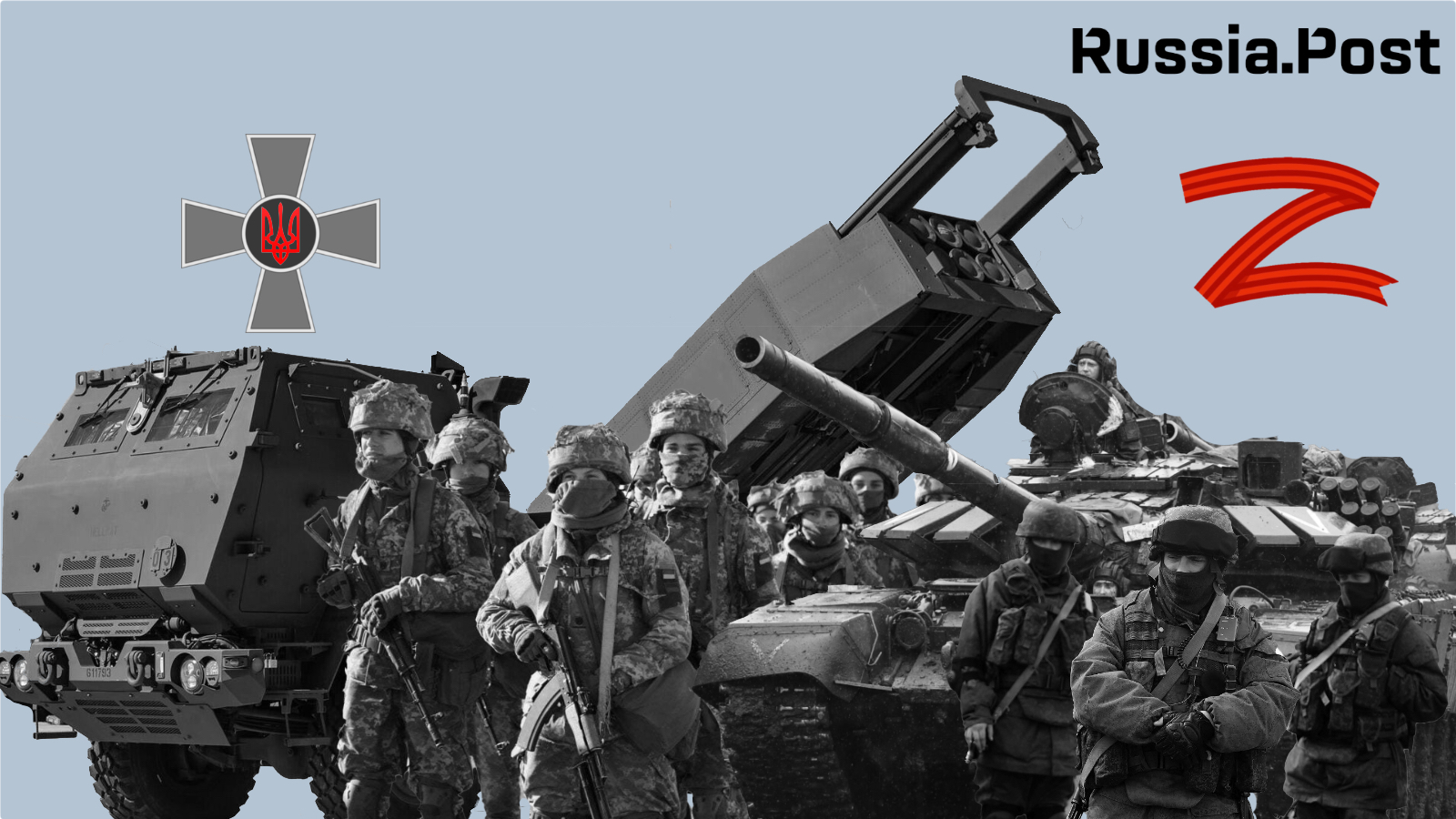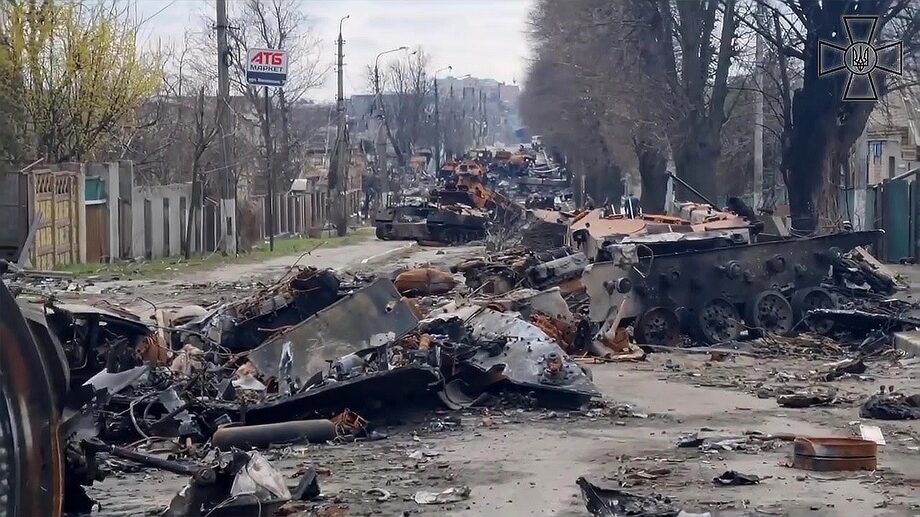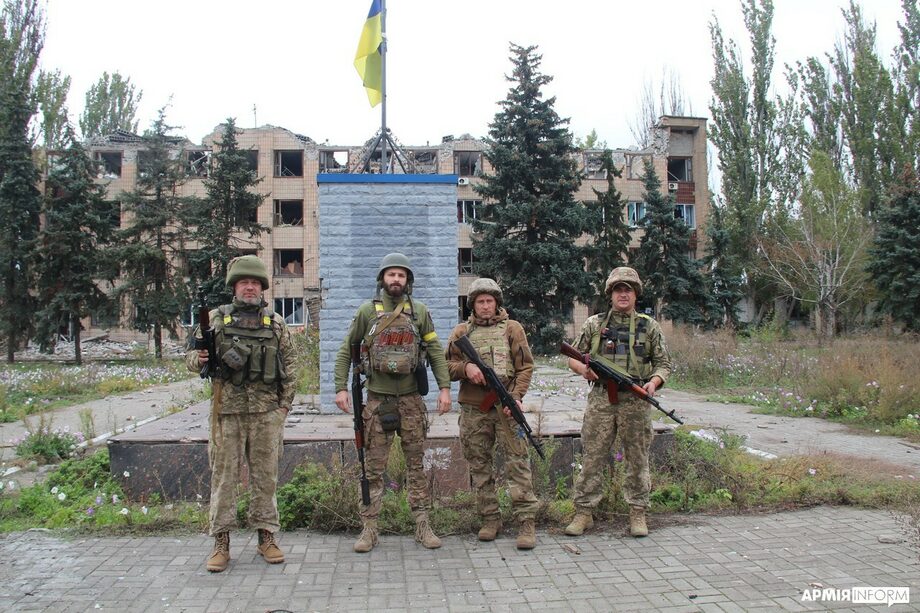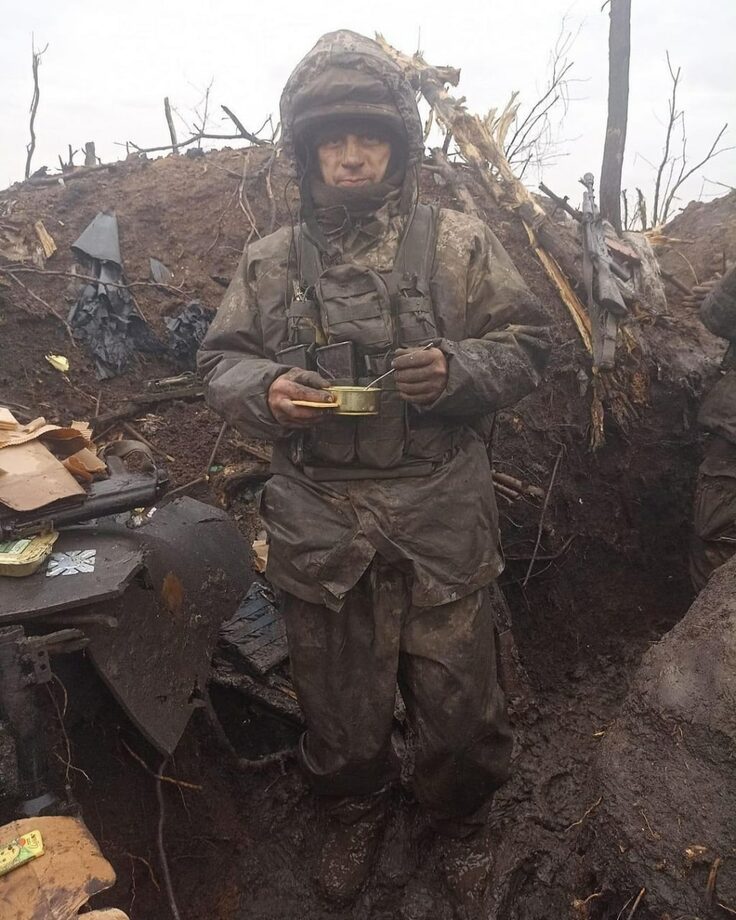Looking back at the first year of the Russia-Ukraine war. Is a truce in the offing?
February 23, 2023
Nikolay Mitrokhin
Associate scholar, Research Centre for East European Studies at the University of Bremen (Germany)

Nikolay Mitrokhin takes us through the key events in the conflict. He expects the resources on both sides to be depleted within a year, leading to a final stabilization of the front and possibly a truce.
Judging by the latest interviews given by the participants and crafters of the Minsk agreements from Germany, France and Russia, it was understood that another war between Russia and Ukraine could not be avoided. Angela Merkel says she saw Germany’s job as enabling Ukraine to prepare for a new conflict.
All the Minsk participants, including the Ukrainian government, assumed that the next war would be for the Donbas. Vladimir Putin spoke about the need to save “Russian people” in the Donbas in all his speeches about Ukraine, including those in which he tried to justify the current war. However, that turned out to be another lie. When the war began, the main objective of the Russian formations (the army, National Guard, troops of the DNR and LNR, private military companies and various volunteer detachments) was the occupation of Ukraine, the liquidation of it as a state, and its division into regions and their further integration into Russia.

Remnants of a destroyed Russian column. Bucha, February 27, 2022.
Source: Wiki Commons
Ukrainian armed forces: Initial plan. Successes and failures
Based on the idea of the centrality of the Donbas in the next war, at least half of the Ukrainian army was stretched along the long front line bordering the territories occupied by Russia in the Donbas. Hardened emplacements were put up there. The entire military strategy of Ukraine was built around “plan A:” hold the front line against a massive attack by the Russian army and DNR and LNR troops.
However, the Ukrainian armed forces (VSU) had a “plan B” for a scenario whereby Russian troops invaded through the poorly protected borders with Russia itself and Belarus. Mobile infantry units, armed with powerful anti-tank weapons primarily of US, Ukrainian and Soviet make, were supposed to hold the enemy in the forests and fields, attacking them from the flanks. Eventually, Russian formations were to be stopped on the outskirts of large cities. There, the infantry would rely on the support of artillery and armored vehicles hidden in urban areas.
There was also a “plan C,” based on the use of “territorial defense units” established in the fall of 2021 with veterans of the first Russia-Ukraine war and patriotic activists. They were supposed to cover the segments of the front line where there were no army units, attack enemy columns from the flanks and carry out an underground resistance in occupied territories.
In practice, all the strategies saw both successes and failures. The VSU failed to foresee the breakthrough of the Russian army north of Kyiv through the Chernobyl zone and the breakthrough of the defense at the Crimean isthmus. Because of these breakthroughs, Russian troops were in the northern and northwestern suburbs of Kyiv in two days and managed to occupy a vast swath of territory in the southeast of the country and cross to the right bank of the Dnieper. There they quickly captured the regional capital of Kherson and almost completely cut off the neighboring one of Mykolaiv. They also brought down the defenses on the south of the Donetsk Front. In addition, Russian troops managed to break the VSU defenses in the north of Luhansk Region and completely occupy it over the next four months, despite desperate resistance by Ukrainian troops.
Russian offensive and major miscalculations
Still, the Russian failures in the first period of the war are much more numerous than the above list of episodes where Russian troops were on the advance. The Russian army failed in its adventurous plan to capture two large airfields west of Kyiv, which were planned to be used to land units that would subsequently attack the Ukrainian capital. The helicopter assault force tasked with that mission was completely destroyed. The entire grouping intended to encircle Kyiv was forced to move along two narrow roads through dense forests and swamps. It got cut off to the north and northwest of Kyiv in the cities around Irpin (including Bucha), where it suffered huge losses.
Similarly, large Russian groupings besieged but failed to take the regional capitals Chernihiv (in the north), Kharkiv (in the northeast) and Mykolaiv (in the south). Russian tank columns took huge losses as they advanced and attempted bungled assaults. As a result, just a month after the start of hostilities, it became clear that Russian troops could not provide supplies for their groupings in northern Ukraine. As the spring thaw set in, and facing constant flank attacks, they simply could not supply enough fuel, food and ammunition to the front line. By the end of March, Russia had been forced to withdraw its troops from four northern regions: Zhytomyr, Kyiv, Chernihiv and Sumy. The VSU also succeeded in pushing Russian troops back from large cities like Kryvyi Rih, Mykolaiv and Kharkiv, thwarting the Russian offensive on the right bank of the Dnieper and driving the enemy out of the suburbs of Kharkiv, Ukraine’s second largest city.
The main reason for Russia’s loss in the first stage and the war as a whole was Moscow’s critical underestimation of the fighting spirit of the Ukrainian army, government and society, as well as the level of weapons and mobility of the VSU. In addition, the adventurous offensive tactics ran into a clear shortage of troops and the inability to ensure supplies in changing conditions.
"Simply put, the calculation was that the enemy would be in shock and awe, so when that did not happen and the enemy began to actively resist, the Russian army did not have its own 'plan B'."
Tweet this quote

Ukrainian forces in Vysokopillia, Kherson Oblast. September 27, 2022.
Source: Wiki Commons
Second stage of the war and HIMARS
The second stage of the war began with the regrouping of Russian troops to the northeast. Backing down from the idea of a swift occupation of all of Ukraine, the Russian leadership ordered the army to concentrate on the Donbas. The idea was to strike from the east of Kharkiv Region to the south to take control of the Kramatorsk- Slovyansk agglomeration in the west of Donetsk Region and thereby cut off the entire VSU grouping in the Donbas from the rest of Ukraine. In April-May, Russian troops got out of their “columns” to form a full-fledged front. Thanks to their superiority in numbers, as well as artillery and heavy mortars, they managed, after heavy fighting, to occupy the strategically important triangle between Kharkiv, Luhansk and Donetsk, capturing such important cities as Izyum and Liman. This allowed them to overtake the last defensive line of the VSU in the west of Luhansk Region, the Sievierodonetsk-Lysychansk agglomeration. Meanwhile, after three months of continuous fighting, the garrison at Mariupol, an important Ukrainian stronghold on the Azov Sea coast, also surrendered. From the beginning of the invasion, Russia was forced to pour in resources to take the city, which allowed the Ukrainian military to prepare robust defense lines south of the regional capital of Zaporizhzhia, on the left bank of the Dnieper.
On the whole, however, the Russian plan failed. The Russian armed forces were unable to completely capture the hilly area between Izyum and Slavyansk and cross the Siverskyi Donets River on the northern flank of the Donetsk grouping of the VSU. Starting in July, the VSU also began to make active use of a new weapon: HIMARS rocket launchers. They made it possible for the VSU to destroy at least 20 large Russian ammunition depots and command posts in the Donbas and southern Ukraine. During the second stage of the war, the Russian army suffered enormous losses in people and equipment, with a simultaneous shortage of personnel and ammunition setting in.

A Ukrainian soldier in a trench near Bakhmut, November 2022. Source: Wiki Commons
Third stage: Mistakes of the Russian political leadership
The third stage began at the end of August, when the VSU progressively carried out three surprise offensive operations in Kharkiv (in the direction of Izyum), Donetsk (Liman) and Kherson regions. Breaking through with groups of mobile infantry in jeeps and armored personnel carriers past the rare outposts of the Russian army outside major segments of the front, the VSU managed to get behind the lines of motorized Russian groupings and put them in danger of encirclement. Thus, Russian forces were forced to beat a swift retreat, leaving behind 500 pieces of heavy equipment damaged or without fuel.
The finale of the campaign was the decision of the Russian leadership to withdraw the grouping from the right bank of the Dnieper, abandoning Kherson and the western half of Kherson Region, which had just officially become part of Russia after a “referendum.” The reason for the retreat was the inability to effectively supply the grouping and the civilian population of the occupied territory. Crossings across the Dnieper were frequently harassed by VSU HIMARS attacks, which came from close range following the September VSU offensive in the north of right-bank Kherson Region.
The VSU’s success had much to do with the mistakes of Russia’s political leadership. First, it put troops on the right bank of the Dnieper, but in numbers clearly insufficient to capture such large cities as Mykolaiv, Kryvyi Rih and more so Odessa, which were the ultimate goal of the offensive in the south. Then, when the army suffered huge losses along the entire front, and the soldiers who reached the rear refused to go back and fight, the Russian authorities hesitated to mobilize, rightly believing that a draft would spur discontent at home.
Instead of mobilizing, the Putin regime tried to solve the manpower shortages by creating various ersatz formations, including battalions of volunteers put together by regional governors and battalions of prisoners recruited in jails in June by Wagner PMC head Yevgeny Prigozhin. However, this clearly failed to stop the bleeding, and the VSU managed to take advantage of the opportunity, with Russian troops going on the defensive in August. This made it possible for the VSU to completely liberate the east of Kharkiv, the western half of Kherson and the north of Donetsk regions.
Fourth stage: War in the trenches and the battle for Bakhmut
However, during the fourth stage of the war – from November to the present day (February 20) – the front stalemated again.
"Thanks to the mobilization, the Russian army could 'plug holes' in the front line. Both armies dug in and trench warfare began. The VSU was not ready to break through the fortified positions of the Russian infantry, supported by artillery."
Tweet this quote
For that, the VSU does not have enough armored vehicles or shells. Moreover, Russian forces, primarily PMC Wagner, managed to seize the initiative and go on the offensive in the middle segment of the front, around the Bakhmut-Soledar agglomeration. Soledar has already been captured, while Bakhmut will probably fall soon.
However, major offensives that had been expected from both sides have not materialized. If they do not start before the end of February, it seems likely that key battles will be pushed off until May-June, when the ground dries up and heavy equipment can move across land.
"Overall, the resources of both sides seem set to be depleted within a year, with a final stabilization of the front to follow."
Tweet this quote
As part of the planned offensive, the VSU could retake the southeastern regions of the country (half of the Donetsk, Zaporizhzhia and Kherson regions) or liberate the Sievierodonetsk-Lysychansk agglomeration. Russian forces, meanwhile, could extend the occupied territory in the Donbas or try to approach the city of Zaporizhzhia and storm it. Still, this would not fundamentally change the situation. Ukraine has neither the strength nor the means to completely liberate the whole country, including the Donbas and Crimea. Western support is compensating Ukraine’s losses, though it is not tipping the scales. Russia is not strong enough to bring Ukraine to its knees. The most likely outcome is a truce along a line cutting through the Donbas and the southeast of the country.
Share this article
Read More
WEDNESDAY, FEBRUARY 22
“The 2020s are the ‘new 1990s.’ But only with a worse outlook and possible outcomes.”
Igor Lipsits writes that after years of budget surpluses Russia again started running a budget deficit and is recklessly spending the National Wealth Fund. This is a disaster for Russia, as 60% of the population lives off the income itcreceives from the state.
TUESDAY, FEBRUARY 21
Does Russia risk disintegration? Experts' Perspectives
Could the war shift the balance in relations between Russia’s ethnic republics and the federal center? Russia.Post asked a pool of experts specializing in regional and ethno-national politics for their take.
Nikolay Mitrokhin
·
전쟁 발발 기념일, 아마 3개국어로 발행될 해에 있었던 일들을 상기시키며 여러 텍스트를 적어 보았습니다(러시아어 버전은 잘 모르겠습니다). 그들 중 첫 번째 영어:
It looks as a sober judgment. Unfortunately, Ukraine doesn’t seem to possess the resources needed to liberate most of the Russian-occupied territories. Luckily, Russia too lacks the resources to proceed with a large-scale land grab anywhere outside of Donbas and (in the worst-case scenario) some other eastern regions of Ukraine. So, some sort of de facto truce (perhaps unformalised) along the current battle lines seems likely - perhaps after 1-2 years of more futile attempts to change the stalemated battlefield situation. The eventual death toll may well be between half a million and a million human lives. What Putin committed in Ukraine is a crime of the century - on par of the US invasion of Iraq exactly two decades ago.
No comments:
Post a Comment